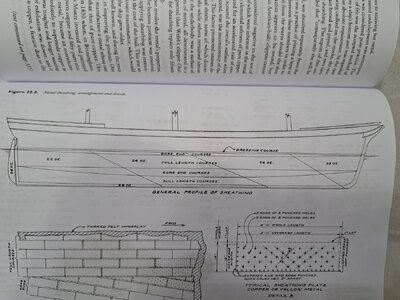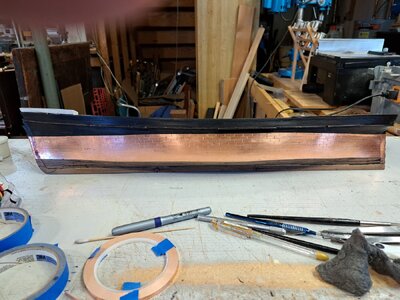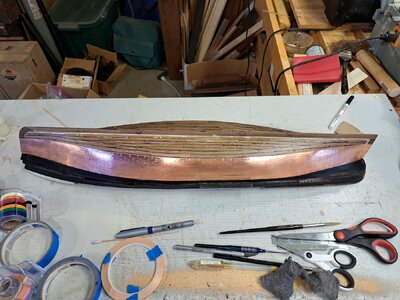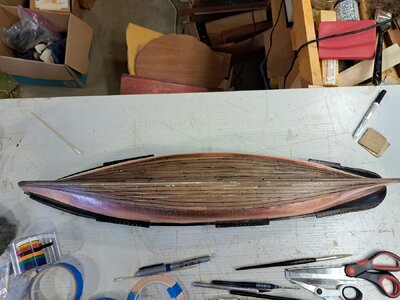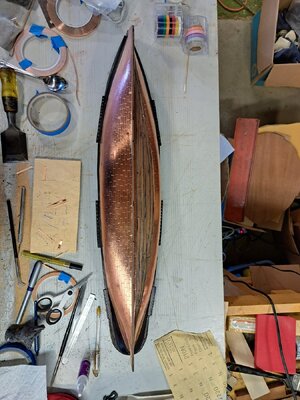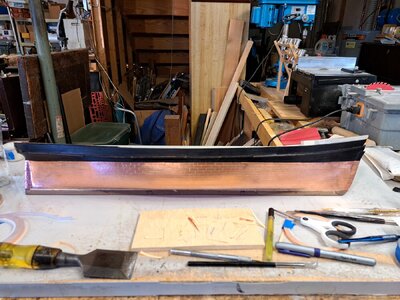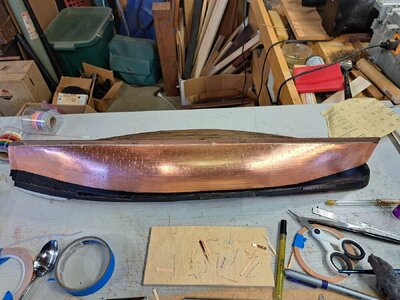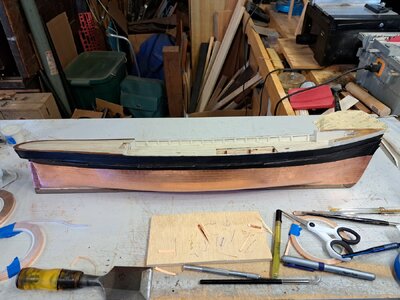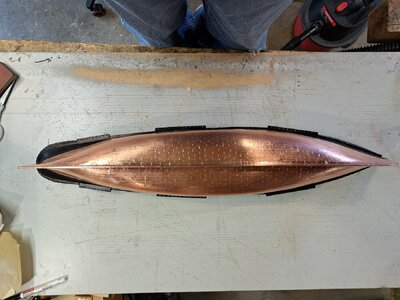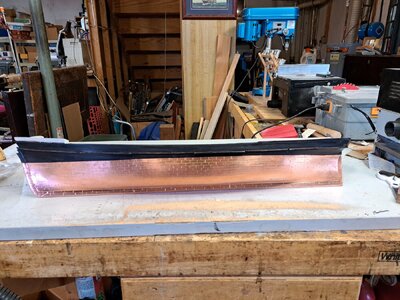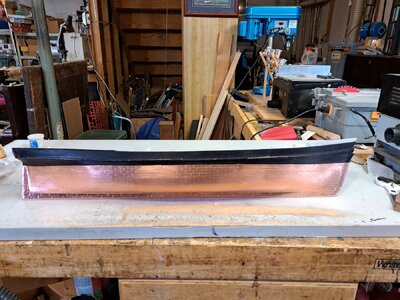- Joined
- Jun 17, 2021
- Messages
- 1,640
- Points
- 488

There's still so much of the bottom you can't see in those pics, that it looks like there's more covered than there actually is. Only a little better than half done! I did use3/16" masking tape to do the layout (hence the blue ink lines. But apparently 3/16th of an inch is variable in width by at least 1/64" one way or another, depending on the product mfg.  . So that, plus error creep, gave me only a rough guide at best.
. So that, plus error creep, gave me only a rough guide at best.
Still, it helps me from getting too far off track. There are three different plate patterns over the span of the hull bottom, waterline to keel, both sides. and each side varies a little due to the subtle a-symmetry from error creep when building and fairing the hull. Fortunately, you can't see both sides simultaneously!
Error creep: an unavoidable fact of life, like entropy.
Pete
Still, it helps me from getting too far off track. There are three different plate patterns over the span of the hull bottom, waterline to keel, both sides. and each side varies a little due to the subtle a-symmetry from error creep when building and fairing the hull. Fortunately, you can't see both sides simultaneously!
Error creep: an unavoidable fact of life, like entropy.
Pete


